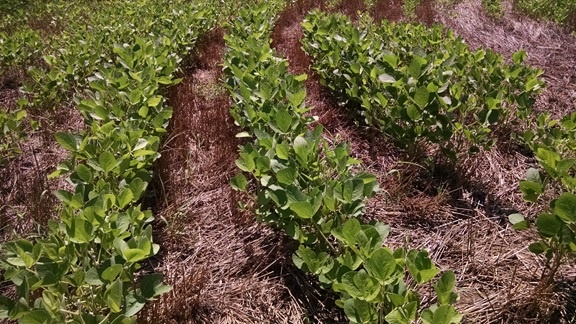Study Builds on Existing Data to Confirm Strategic Priorities

Researchers from several Midwestern universities collaborated on a project, funded by the soy checkoff, clarifying several issues ranging from the regional protein concentration of soybeans to the relationship between protein concentration and yield.
Taking a New Look
For the study, “Spatial Characterization of Soybean Yield and Quality (Amino Acids, Oil, and Protein) for United States,” a team of eight researchers, led by Ignacio Ciampitti, Ph.D. and associate professor of crop production and cropping systems at Kansas State University, conducted a meta-analysis of previously generated data. The purpose was to identify a possible correlation between cultural, environmental and genetic factors, such as how planting date and maturity group impact soybean protein and amino acids in specific growing regions over several years.
The data, primarily sourced from Farmers’ Independent Research of Seed Technologies trials of commercial varieties, uses previously generated data from a number of years. The soy checkoff, along with other organizations, sponsors the FIRST trials.
“This was a challenging project because we were working with a very large—over 30,000 data points—and complex data set with more than five years of data,” said Ciampitti. “This is one of the first projects looking at the geographic distribution of amino acids for the U.S.”
Clear Findings
By evaluating data in a different scope, researchers confirmed previously held relationships, such as:
- Protein concentration in soybeans varies between regional growing areas throughout the U.S.
- There are some correlations between essential amino acids, with the correlation between isoleucine and valine being the strongest.
- Previously reported correlations between the concentration of protein and oil with latitude were confirmed.
- Not all the amino acids follow the same geographical distribution as portrayed for protein.
- Future research is needed to examine the impact of farm management practices on both yield and quality.
“Everyone knows that protein in soybeans has geographic separation,” says Ciampitti. “One of the main questions we asked the data was if amino acids follow a similar trend to protein or not. One of the confirmations we received was that protein levels across different states are not always related to amino acids.
“We can see the impact of the environment and weather conditions,” adds Ciampitti. “For example, 2012 was not the best year for growing soybeans. If you look at amino acids, that period had a low concentration of amino acids. We start understanding how management practices, environment and varieties influence the final quality of soybeans.”
According to Ciampitti, the findings present room for significant opportunities to improve overall soybean quality.
“We still have a lot to learn about improving quality, but this is a great first step,” he says. “Quality is the result of multiple factors. We need more knowledge to understand the complexity involved in choosing the right variety, using the right management practices under the current environmental conditions.”
To read the complete research paper, click here.



